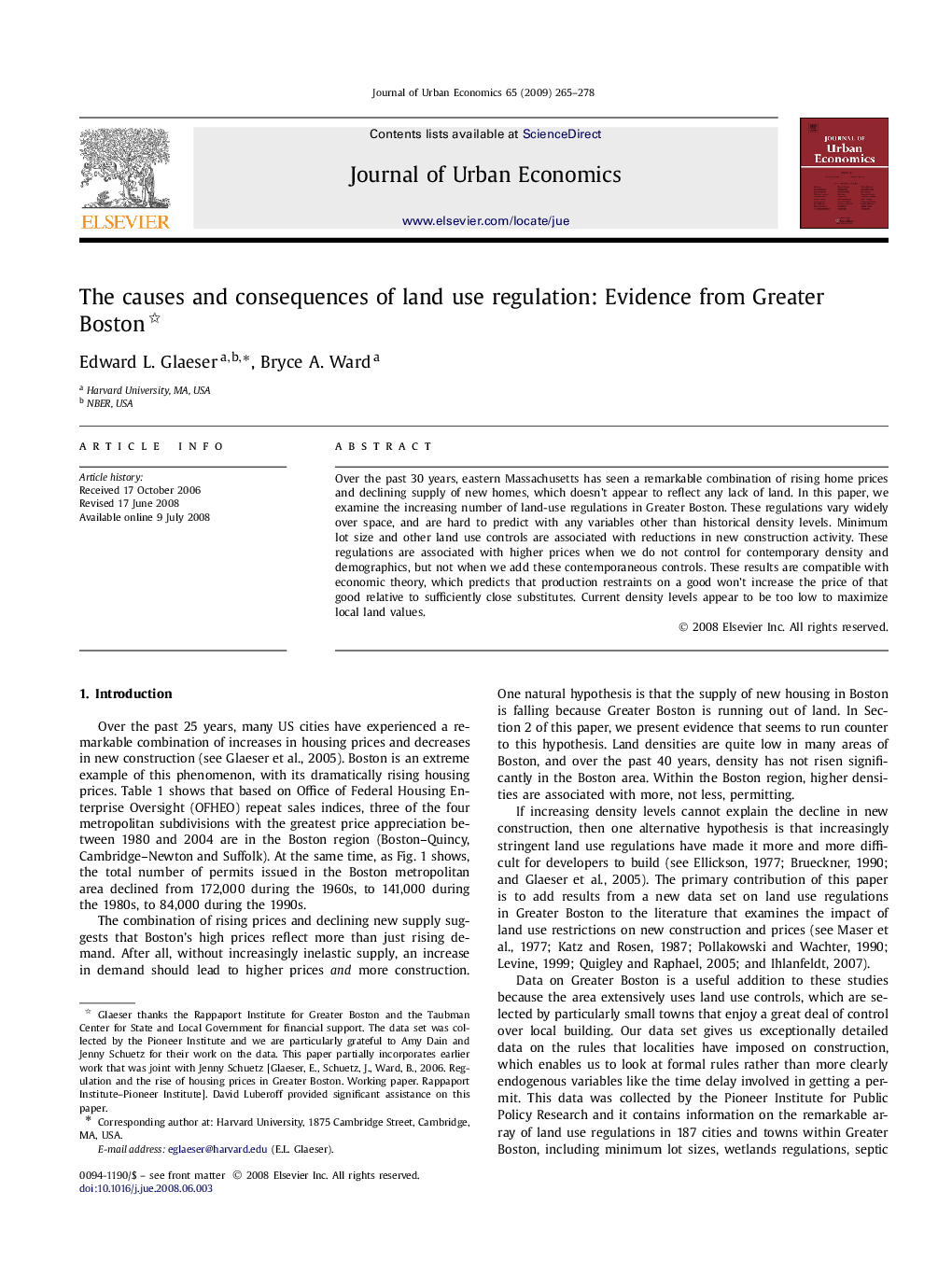| Article ID | Journal | Published Year | Pages | File Type |
|---|---|---|---|---|
| 970779 | Journal of Urban Economics | 2009 | 14 Pages |
Over the past 30 years, eastern Massachusetts has seen a remarkable combination of rising home prices and declining supply of new homes, which doesn't appear to reflect any lack of land. In this paper, we examine the increasing number of land-use regulations in Greater Boston. These regulations vary widely over space, and are hard to predict with any variables other than historical density levels. Minimum lot size and other land use controls are associated with reductions in new construction activity. These regulations are associated with higher prices when we do not control for contemporary density and demographics, but not when we add these contemporaneous controls. These results are compatible with economic theory, which predicts that production restraints on a good won't increase the price of that good relative to sufficiently close substitutes. Current density levels appear to be too low to maximize local land values.
